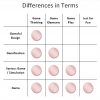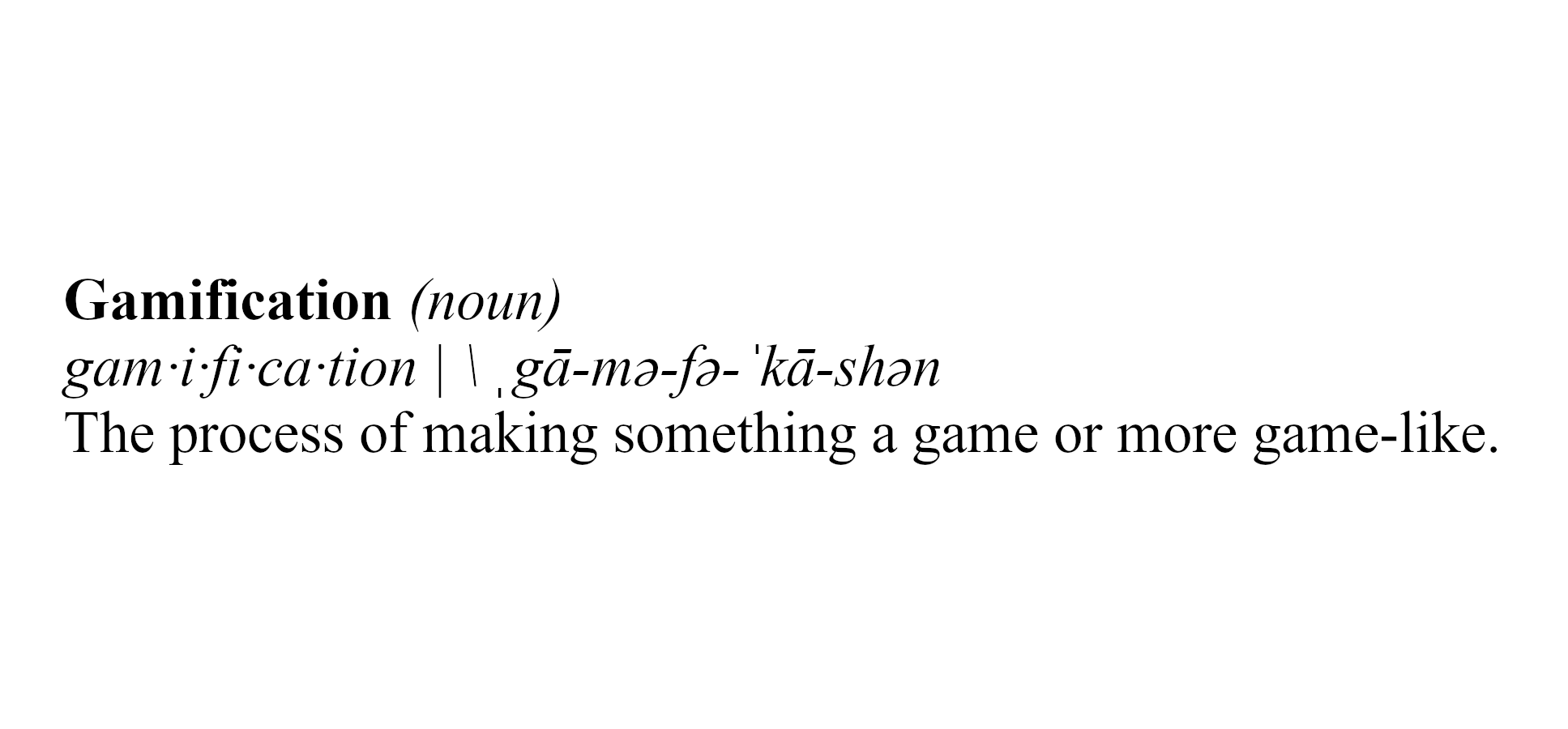I was wrong… for many years in fact. So, here I am again, banging on about definitions. I have been here before, but usually trying to push through the idea of a more academic and “correct” definition of gamification. However, over the years I have realised that this is not much use to most people! I have banged my head against more tables and brick walls that I would care to mention trying to get people to understand “no, it’s not about games…. Well it could be… urm…”
This comes down to the fact that in the non-academic world, the word gamification, or gamify sits in a series of words that essentially mean to become more of something, or to become it!
Take the word beautify as an example. The Oxford dictionary defines that simply as “make beautiful”. Whilst we are thinking of the word simply, it also defines simplify as “make simple”.
So, it stands to reason that the layperson would look at the word gamify and assume it means “make gameful” or just “make game-like” (as gameful isn’t really in common language still). And, as we are looking at this from the layperson perspective – I’m throwing in the word game as well, not just game-like!
If we go on to define the noun version of beautify, beautification, we would use something like “the process of making something more beautiful”. We don’t see anyone defining it as “the process of using elements of beauty in non-beauty contexts”!
In the same way, the definition of gamification should be “the process of making something a game or more game-like”.
And this is where the issue lies for most people, especially those outside of the academic world. The definition of a word is pretty direct and simple, it does what it says. It doesn’t contain caveats or descriptions of what is not included, it is just what the word is, means or does.
You can add the how and the why, but that might change in different contexts. For instance, we could talk about the beautification of urban areas.
Beautification of urban areas: the process of making urban areas more beautiful to improve the aesthetic qualities for those who live there by adding parks and green land.
In the same way, you could say
Gamification of learning materials: the process of making learning materials into a game or more game-like to improve users experience, participation and completion rates by using the materials in a scenario-based simulations, with deep gameplay as well as progress markers such as points and badges”
The point of all of this nonsense is that my big takeaway after 10 years of trying to explain gamification is that most people just assume the word is defined the same way other words that end in “ify” and “ification” are, not caveated and twisted to exclude the main item they think it refers to! They don’t care that strictly speaking it should not include full games and points and badges are too simple to be part of it and… blah blah blah.
So from now on, accepting that I have spent 10 years probably hammering home something considered wrong to the majority of non-experts in the world, I am using the following…
“Gamify (verb): make a game or game-like”
“Gamification (noun): the process of making something a game or game-like”
I use “something” here rather than ” an experience, service, system, UI, turnip etc” because I am trying to keep it as simple as clients want it to be. We can add context and methods after they understand this.
What game-like may contain could be up for discussion, but as far as most clients are concerned, it absolutely covers everything from adding points and a leaderboard all the way up to making a full game – so it should mean that to us as practitioners if we ever want to get over the massive speed bump which is still the word Gamification!
Don’t get me wrong, from an academic perspective and from a practitioner to practitioner perspective there are still 50 shades of gamification and game based solution design to talk about. However, we are in the business of solving problems, not creating them because we feel that serious games and gamification are different and should not be spoken about in the same breath, or that we should correct the prospective client for their lack of understanding!
Similar Posts:
- Gamification, Hypocrisy, Snoop Dogg and Words
- Playfulness, Seriousness and Gamification
- What Makes a Good Serious Game?

Also published on Medium.


This looks good to create an understanding, especially with clients. If I can complain now I’ll have to change a bunch of teaching presentations quoting your previous definition XD.
https://gamified.uk/gdef/
Now you may complain 😉
Creo que no debemos dejar fuera de la definición a la palabra EXPERIENCIA. Las experiencias pueden ser más o menos complejas, más o menos profundas o superficiales. Y en Gamification esto se aplica: si decidimos con una capa delgada o con capa gruesa. Podría ser: “CONVERTIR ALGO EN UNA EXPERIENCIA QUE SE VIVENCIE SIMILAR A UN JUEGO” O algo así.
“I believe that we should not leave the word EXPERIENCE out of the definition. The experiences can be more or less complex, more or less deep or superficial. And in Gamification this applies: if we decide with a thin layer or a thick layer. It could be: “TURNING SOMETHING INTO A GAME-LIKE EXPERIENCE” Or something like that.”
I considered “The process of making an experience into a game or more game-like”. However, experience can mean different things to different people and, in theory, everything is an experience! I hate the word something as it is too broad, but that is actually the point after hours and hours of trying to find better words 😉
Its so sad to read this after ten years there is not a clear definition of gamification!
But andrzej consider something here that there is a conflict of interest.
You talk about gamification and companies think its a game! They want to hire you and ask you for a game with the name of gamification so if you tell them that no this is not gamification! You loose money! Thats why most gamification designers design games🙄 and make defining gamification hard…
The thing is, you talk to them about their needs. They may want a game, but they probably don’t need one. So you as the consultant need to find where the compromise is. The key is not to let a misunderstanding of a words meaning create barriers. Then, if you can’t supply what they need, you be honest and pont them elsewhere.
Am I still wrong?
I prefer the second part of this new definition, ” the process of making something like a game or game-like. This way, we might be able to avoid the misunderstanding of a full-game solution for “that something” mentioned in the definition.